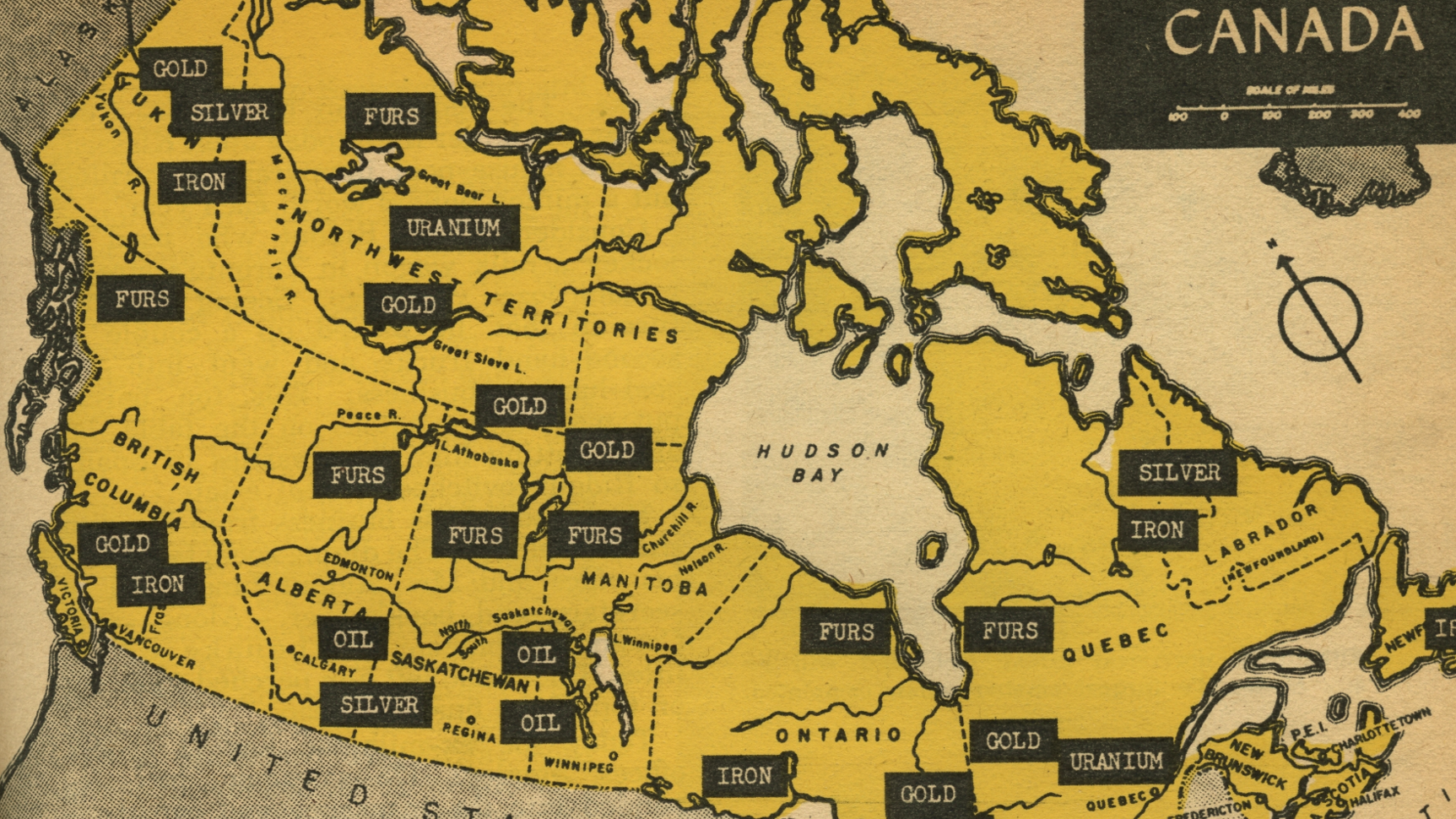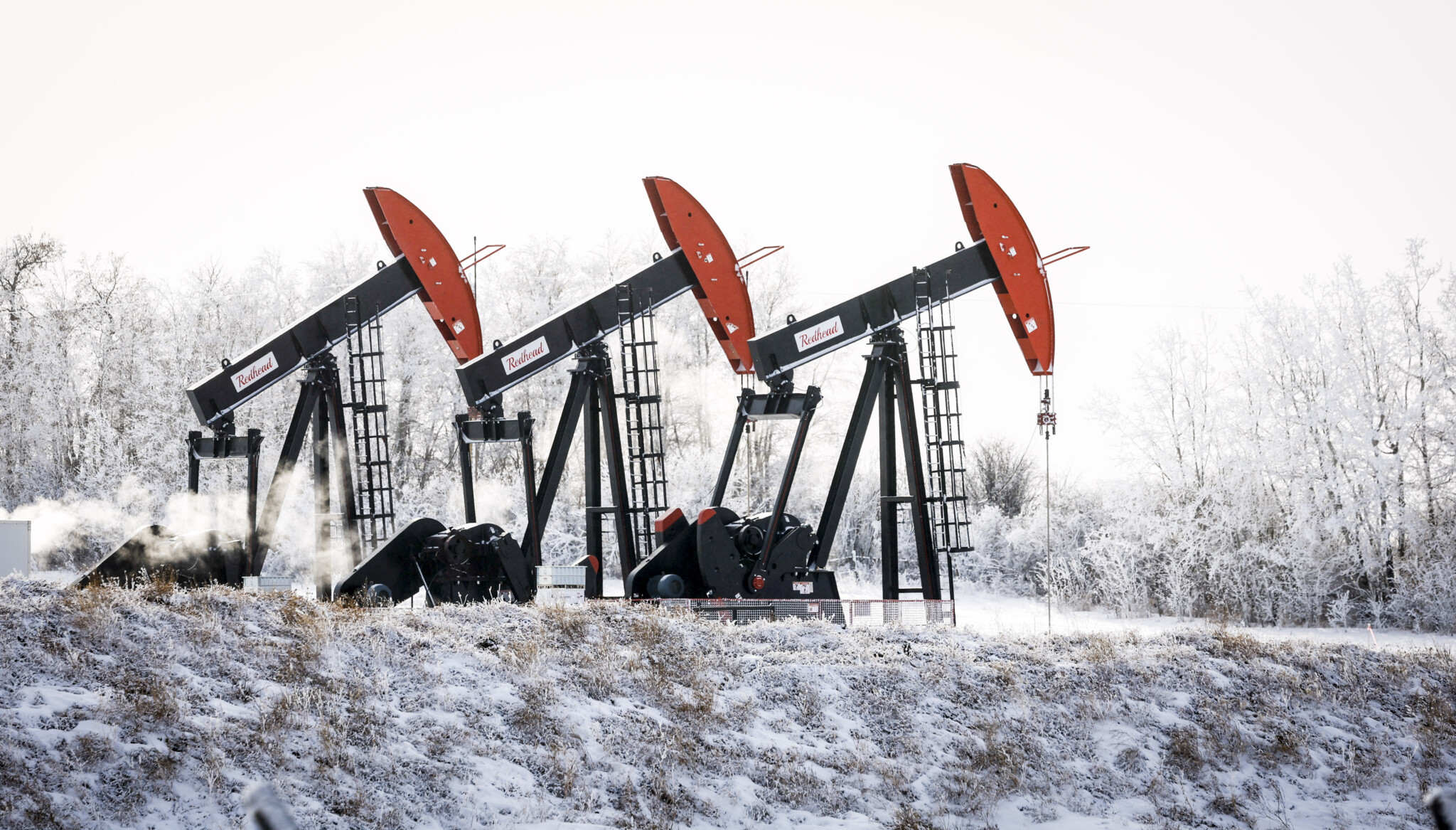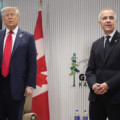If Canada is to reduce its economic dependency on the United States it must attract significant investment—billions of dollars. Ideally, these funds will come from investors and corporate capital, rather than our deficit-ridden treasury.
The good news? Canada has been an attractive investment destination before. It’s time to position ourselves as one again—quickly.
A February 1955 edition of Mechanix Illustrated offers historical context. Akin to Popular Science, the magazine provided American readers with a glimpse into Canada’s resource potential.
At the bottom of an unremarkable cover about houseboating, a teaser headline would catch the eye of any adventurous capitalist: “There is a fortune to be made in Canada.”

A map of Canada from the February 1955 edition of Mechanix Illustrated.
Turning to the featured article, page 55 presents a black-and-white photo of an oil refinery with the bold headline: “Our lusty neighbour to the north offers the chance of a lifetime to men of vision.” Flipping the page, readers encountered a yellowed map of Canada, annotated with the nation’s prized resources: gold, silver, uranium, iron, and oil in Western Canada. The article raved about abundance, opportunity, and the promise of riches—a clear call for investment.
Looking at that article and the map in today’s context, the desirability of our mineral resources is more evident than ever. Yet, what happened to Canada’s once “lusty” appeal to make a fortune? In the oil and gas industry, investor capital is leaving the economy, not coming in—the net exodus in 2025 is likely to exceed $35 billion.
Without investment, Canada’s undeveloped resources sit idle in a geopolitically charged world.
President Trump’s repeated tariff threats and remarks about Canada becoming a 51st state highlight the fragility of our economic sovereignty. His past references to the Canada-U.S. border as an “artificially drawn line” point a spotlight on the vulnerability of our trading relationship. But this isn’t theatre. Canadians shouldn’t view tariffs, stagnating investment, and capital flight as if they’re part of some reality TV show.
Reducing dependence on U.S. trade requires investing in infrastructure to boost interprovincial commerce and global exports. Energy must be a priority, given its major contributions to our economy and government revenues. In 2025, Canada’s upstream oil and gas sector is projected to generate $177 billion in revenue, with over $100 billion going back into the domestic economy.
Energy security is a big issue: Western Canada exports most of its oil and natural gas to the U.S., while Central Canada imports most of its supply from pipelines that transit south of the border, meaning we don’t have jurisdictional control over our vital supply lines. Even before tariffs, Michigan wanted to shut down the Line 5 artery into Ontario. Also of concern, we often sell oil and gas to the U.S. at discounted prices and reimport equivalent energy at higher prices.
Since the Mechanix Illustrated article, investors and multinational corporations have poured fortunes into Canada’s resource economy. Over seven decades, the upstream oil and gas industry has made an estimated $2 trillion in cumulative investment—this includes both capital from foreign investors and internally generated funds. Without the influx of foreign capital to supercharge the spending, the oil and gas industry would not have reached its current scale. All in, the investments have made Canada the world’s fourth-largest oil and natural gas producer and created an industry that is expected to deliver over $45 billion in royalties and taxes this year.

The Trans Mountain Westridge Marine Terminal, where crude oil from the expanded Trans Mountain Pipeline is loaded onto tankers, in Burnaby, B.C., Monday, June 10, 2024. Darryl Dyck/The Canadian Press.
The north-south trade relationship with the U.S. has long been the foundation of our energy industry. The recent expansion of the Trans Mountain pipeline marks the first meaningful shift toward diversification, opening pathways to Asian markets. Yet, it’s only a first step in reducing dependency on a single customer.
Tariff talk has reignited discussions about long-stalled infrastructure projects like Energy East, Northern Gateway, and further Trans Mountain expansions. For LNG, there is increased interest in export capacity on the west coast and new capacity in Quebec. The opportunity to diversify is real—but ambition alone won’t suffice. Building infrastructure demands more than patriotic resolve; it requires substantial investment, including from global multinationals.
This brings us to the core question: Why was Canada a magnet for energy investment in 1955, and why isn’t it now?
Global oil demand in the mid-1950s was 18 million barrels a day and growing rapidly, so there was an obvious incentive to invest. Today, on a percentage basis demand growth has slowed down, yet consumption is stubborn at over five times the size, 103 million barrels per day, and still growing.
In 1955, Canada had an entrepreneurial spirit, where risk-takers could develop resource projects with relative ease. Today, that efficiency has been replaced by a bureaucratic maze of permitting delays, court challenges, and layers of burdensome, incomprehensible, and tangled carbon policies. While some are well-intentioned, these regulations are discouraging rather than encouraging investment.
Ironically, Canada’s rigorous environmental and regulatory standards should be an asset. Instead, they’ve become a deterrent. Investors don’t just want a fair and competitive playing field; they want a jurisdiction where risks and returns are predictable, where the time value of money is respected (permits must be granted or denied promptly), and where regulatory decisions are fair. Instead, Canadian project proponents can spend hundreds of millions, if not a billion dollars, advancing a project through the multi-year approval process, only to face rejection due to political calculations rather than a project’s merit. These are the high barriers to building energy infrastructure and are scaring capital away instead of attracting it.
Governments—provincial and federal—must act urgently to lower barriers to investment. Industry, regulators, financial institutions, and other stakeholders must convene to rebuild Canada’s investment climate.
In 1955, Canada’s appeal was strong enough to be featured in an American magazine. Seven decades later, our potential remains undeniable—Trump’s 51st state comments validate that notion. Our resources—critical minerals like lithium, cobalt, uranium, and rare earth elements, alongside oil and gas—are highly desirable globally and regionally.
To preserve prosperity and sovereignty Canada must become attractive for investment again—not just for multinational corporations, but for domestic entrepreneurs, business leaders, and financiers. That doesn’t mean selling out on environmental or social values. It means that we become a competitive jurisdiction again, a place that’s open for business, a place where the promise of “a fortune to be made in Canada” is not just a relic of the past, but a necessity that supports our prosperity for future generations and preserves our sovereignty too.
Watch an interview with the author here:









